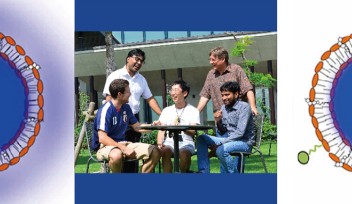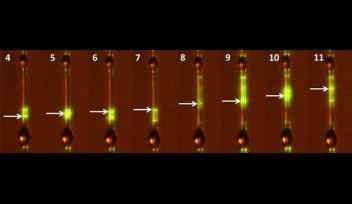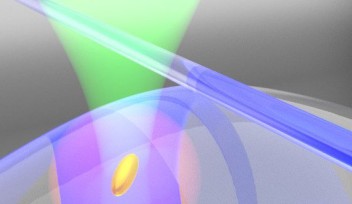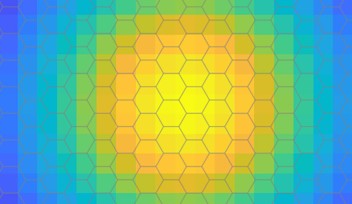New Unit Profile: Custom-Built Nanoparticles
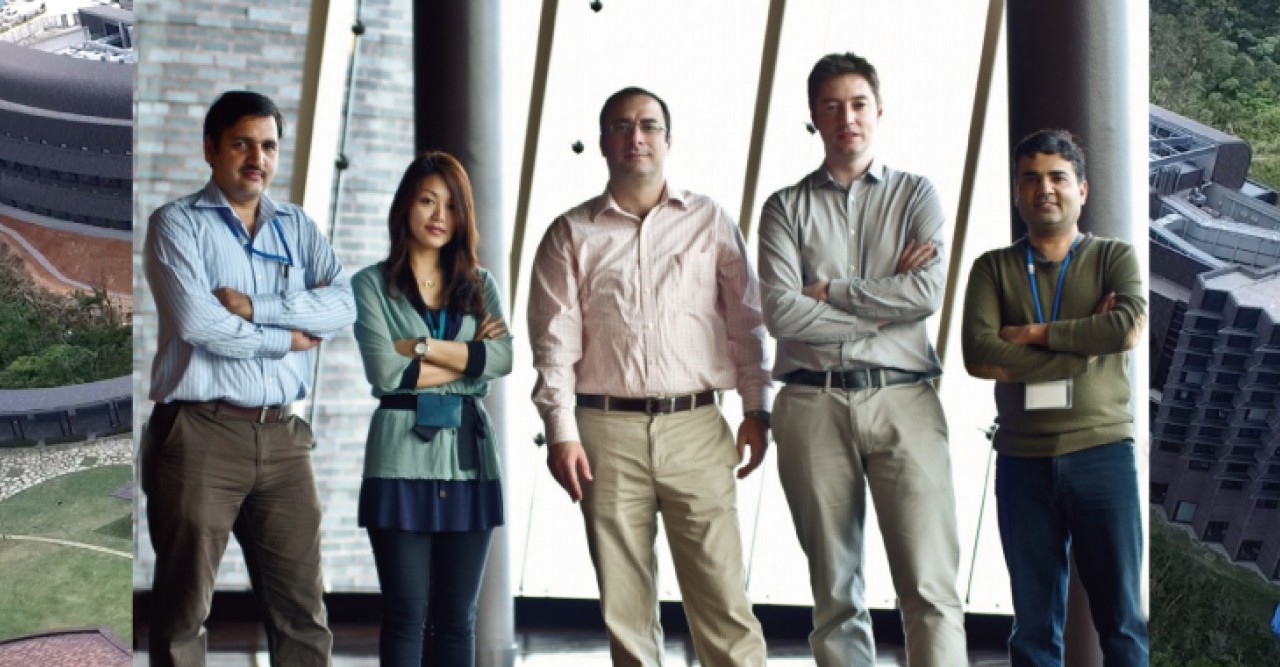
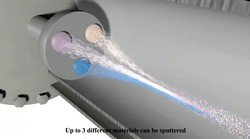
Click to see an animation showing a new nanoparticle deposition system in OIST’s Nanoparticles by Design for Nanotechnology and Biomedical Applications Unit.

The members of the Nanoparticles by Design for Nanotechnology and Biomedical Applications Unit.
Nanotechnology is one of science’s hottest fields right now, with nanoparticles turning up in everything from antimicrobial sports gear to semiconductors to sunscreen. Mukhles Sowwan, the head of OIST’s new Nanoparticles by Design for Nanotechnology and Biomedical Applications unit, wants to put nanoparticles to work in even more applications by creating a catalogue that will make ordering custom nanoparticles almost as easy as phoning for pizza.
Nanotechnology is based on the fact that materials tend to have different properties when in the form of small particles than they do in larger structures. For example, silver nanoparticles—pieces that are .0001 mm or smaller in diameter—have different optical, electrical, and chemical characteristics than does a silver fork. These special characteristics mean that nanoparticles have many potential applications; silver nanoparticles are already used in electronics, on bandages, and in coatings on household appliances, among other uses.
But current chemistry-based techniques for making nanoparticles are imprecise, yielding particles with different sizes and compositions. In addition, researchers who want to order pre-made nanoparticles have a limited range to choose from. That’s where Prof. Sowwan’s work comes in. He has devised a new method of making nanoparticles in which molecules come together in a vacuum tube rather than in a chemical solution. This gives Prof. Sowwan more control over the nanoparticles’ composition, so that, for example, the shell can be made of a different material than the core. The vacuum tube can also filter nanoparticles by size, allowing for further customization. “We will use size and composition to tune the properties of these compounds,” says Prof. Sowwan. He expects the new production system to be in place by late June.
In the meantime, his team is at work fine-tuning methods for checking the nanoparticles’ properties, including their structure, electrical and optical characteristics, and chemistry. Once the production system is up and running, the unit can begin producing and characterizing different types of nanoparticles and adding them to a catalogue of materials they and their collaborators can use. The collaborators will in turn contribute additional information about the nanoparticles’ properties.
The unit will also work on its own nanotechnology applications; Prof. Sowwan is particularly interested in developing novel cancer therapies, drug delivery systems, infrared detectors, and sensors. But the range of potential applications is much larger than that. “In principle, everyone needs my nanoclusters in one way or another,” Prof. Sowwan says. If all goes well, in a few years collaborators will be calling him up to request their very own custom-built nanoparticles.
Specialty
For press enquiries:
Press Inquiry Form










